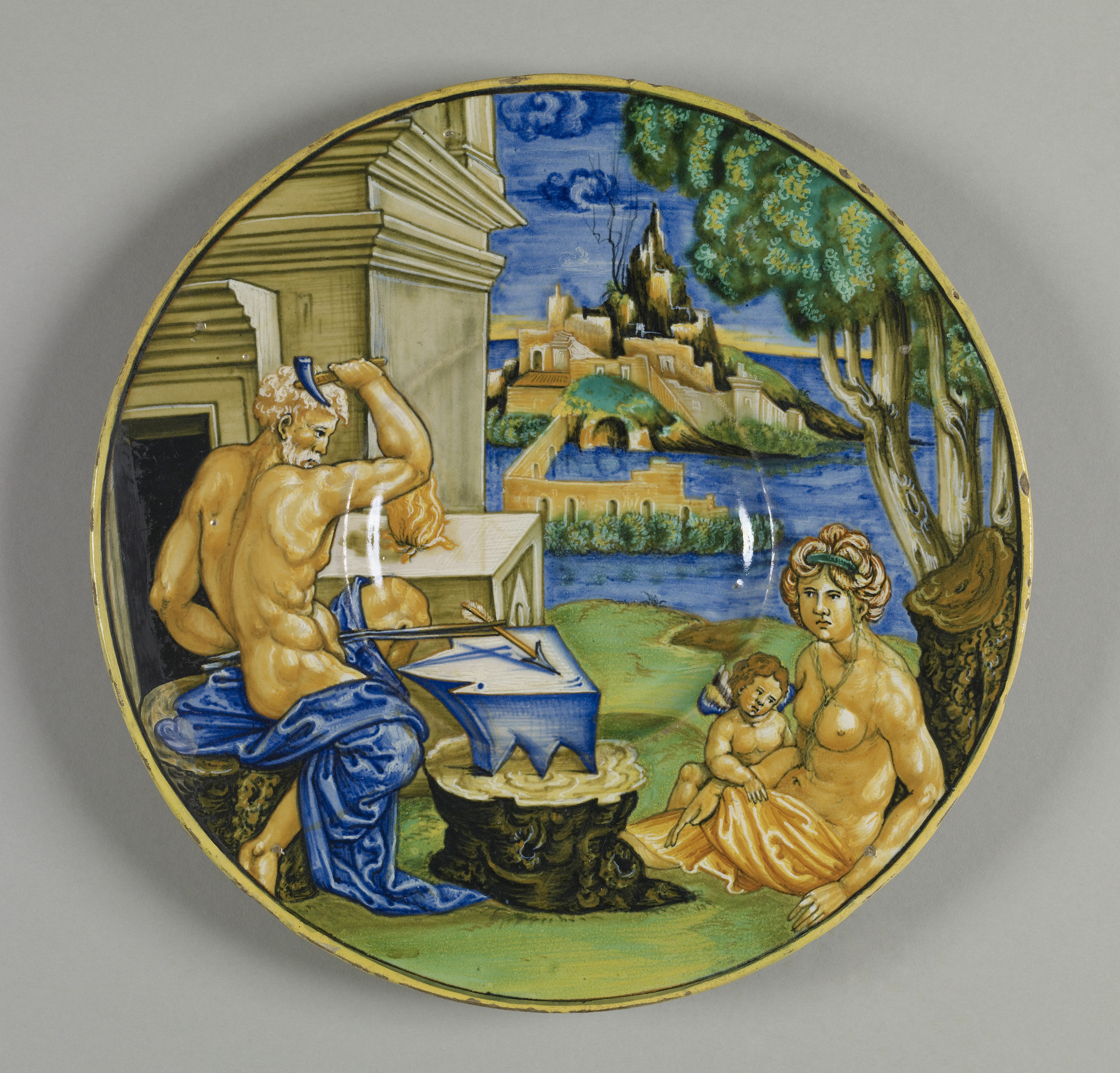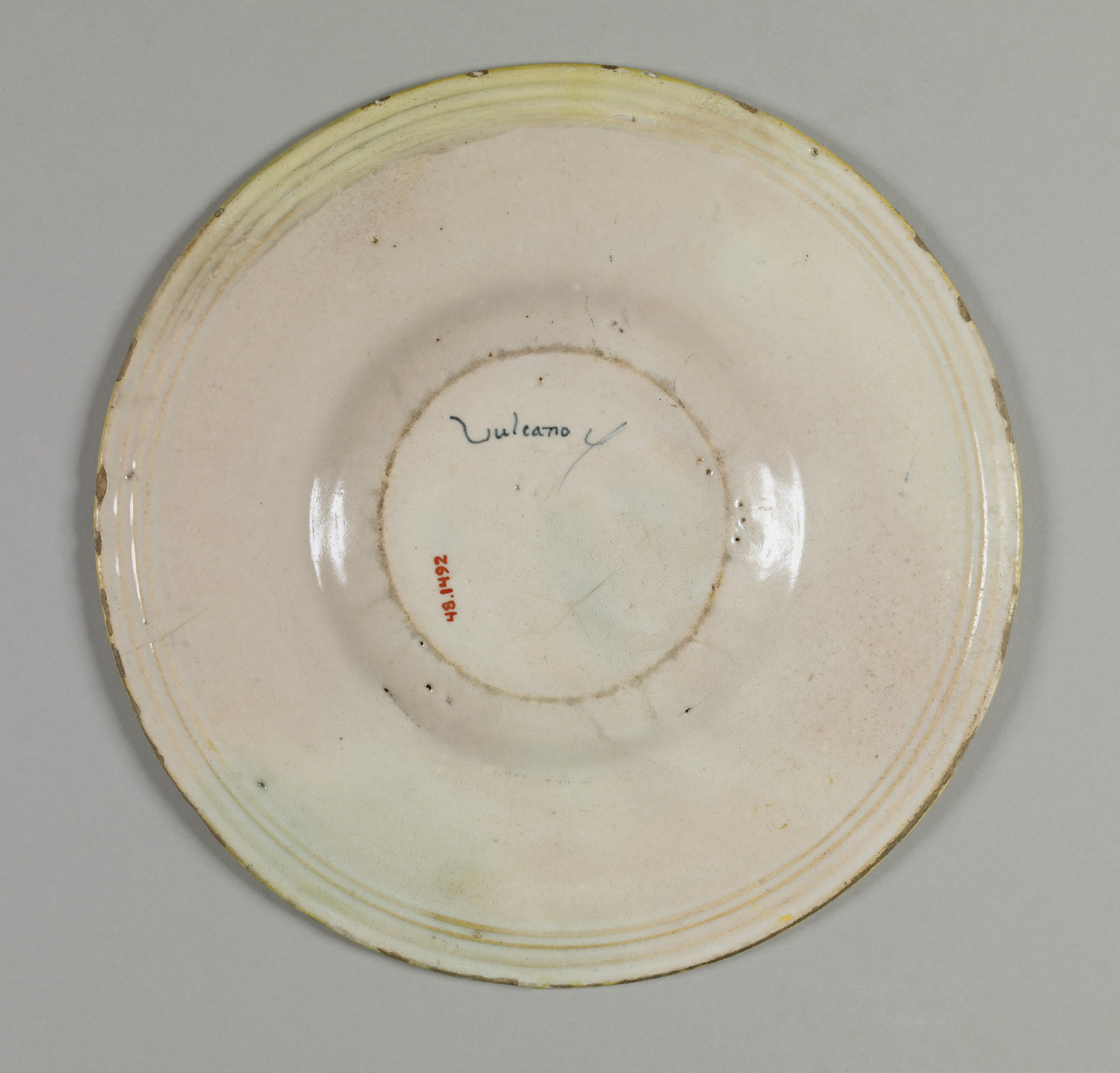Plate with Vulcan, Venus, and Cupid
(Renaissance Europe )
Venus, the Roman goddess of love, was married to the blacksmith-god Vulcan. This istoriato (story telling) plate shows him at left forging an arrow for Venus’s son Cupid, god of love, who accompanies his mother next to the tree at right. Although he is portrayed as a child, Cupid's power is great, since he targets the hearts of both humans and gods. Using gold-tipped arrows he makes them fall madly in love; however his lead-tipped ones cause them to reject all romantic advances.
This is a fine example of Xanto Avelli’s ability to compose the scene in graceful accommodation with the shape of the plate. The figures occupy the foreground, while the architecture at left and the island in the center create a deep sense of space. Xanto briefly identifies the subject with the word "Vulcan" on the reverse.For more on Francesco Xanto Avelli, see no. 48.1373 and for more works by him click on his name in the "creator" field.
For more information on maiolica, see no. 48.1336
For more information on istoriato ware, see no. 48.1487
Inscription
Provenance
Provenance (from the French provenir, 'to come from/forth') is the chronology of the ownership, custody, or location of a historical object. Learn more about provenance at the Walters.
Seligmann [date and mode of acquisition unknown]; Henry Walters, Baltimore [date and mode of acquisition unknown]; Walters Art Museum, 1931, by bequest.
Exhibitions
| 2018 | Sharing Images: Renaissance Prints Into Maiolica and Bronze. National Gallery of Art, Washington. |
Geographies
Italy, Urbino (Place of Origin)
Measurements
H: 1 1/16 x Diam: 10 7/16 in. (2.7 x 26.5 cm)
Credit Line
Acquired by Henry Walters
Location in Museum
Accession Number
In libraries, galleries, museums, and archives, an accession number is a unique identifier assigned to each object in the collection.
In libraries, galleries, museums, and archives, an accession number is a unique identifier assigned to each object in the collection.
48.1492








